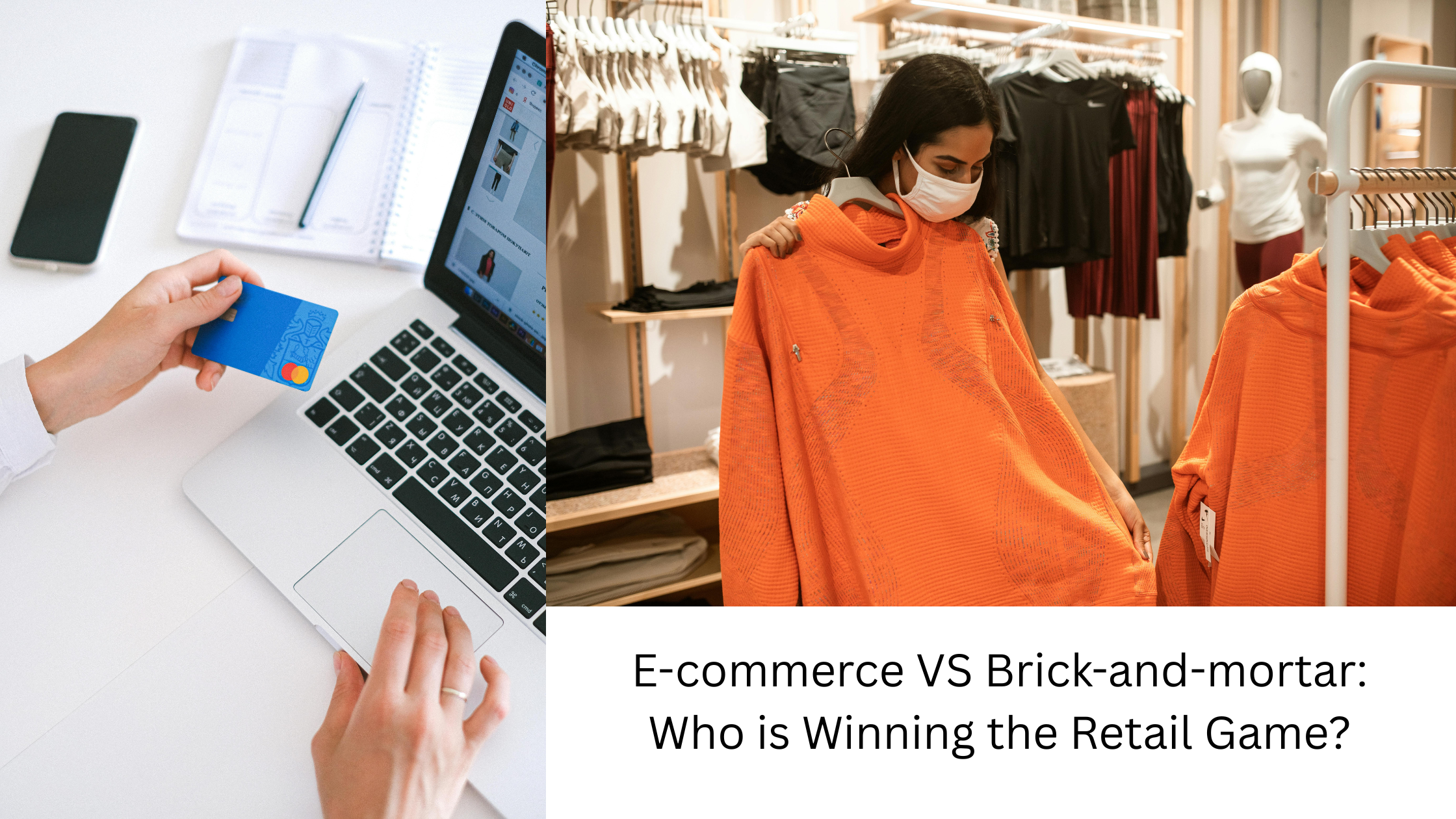Ever since the first online sale in 1994—a CD of Sting’s Ten Summoner’s Tales —retail has been on a digital journey. The COVID-19 pandemic accelerated the growth of online shopping and left many wondering: is brick-and-mortar retail still relevant? Despite the digital wave, physical retail stores continue to dominate total retail sales globally.
In this blog, we explore how brick-and-mortar and e-commerce compare—and why the real winners are those embracing both in a unified, omnichannel strategy.
Retail by the Numbers (2025)
- 72% of global retail sales still happen in-store (Retail Dive, 2023)
- E-commerce sales are projected to exceed $6.3 trillion globally in 2025 (Statista, 2024)
- 59% of consumers prefer to touch and feel products before purchasing (PwC, 2024)
- Omnichannel shoppers have a 30% higher lifetime value than single-channel customers (Harvard Business Review, 2023)
The Strengths of E-commerce
E-commerce, or electronic commerce, refers to the buying and selling of goods and services over the internet (IBM, n.d.). It has become essential for retailers looking to scale beyond borders.
Benefits:
- Convenience: Shop anytime, from anywhere
- Scalability: Reach global markets without physical presence
- Limitless Shelf Space: List extensive inventories, especially for dropshipping or niche items
- Personalisation via AI & Analytics: Deliver customised promotions and recommendations using CRM and AI tools
Drawbacks of E-commerce
While powerful, e-commerce has several operational and experiential limitations:
- High Return Rates: E-commerce returns average 30%, and go as high as 60% in fashion (Invesp, n.d.; Beumer Group, 2023)
- Lack of Sensory Experience: Customers can’t touch or try before buying
- Rising Customer Acquisition Costs: Increased digital ad spending is impacting margins
- Fulfilment Challenges: Delivery delays, packaging issues, and logistics complexity
The Strengths of Brick-and-Mortar Retail
Brick-and-mortar refers to traditional physical stores. Far from obsolete, they continue to provide experiences that online channels can’t replicate.
Benefits:
- Lower Return Rates: Just 8.89% compared to e-commerce’s 30%+ (Invesp, n.d.)
- Experiential Shopping: Physical engagement builds trust and loyalty
- Impulse Buys: Store displays and ambiance influence purchases
- Instant Fulfilment: Walk out with your purchase
Drawbacks of Brick-and-Mortar Retail
Despite their strengths, physical stores also face challenges:
- Higher Overhead Costs: Rent, utilities, and staffing add up
- Geographic Limitations: Reach is constrained to nearby foot traffic
- Limited Inventory: Shelf space caps product diversity
- Inconsistent Service: Staff experience can vary across locations
- Harder Data Collection: Less real-time customer insights without tech integration
Where the Magic Happens: Omnichannel Retail
Smart retailers are not choosing between the two. Instead, they’re embracing an omnichannel approach that combines the best of both worlds.
Innovation Examples:
- Canada Goose’s “The Journey”: A store where nothing is sold onsite. Customers walk through a snow-filled room, try on parkas, then purchase online—blending experience with inventory flexibility (Walton College, 2024).
- Click & Collect (BOPIS): Customers shop online, pick up in-store, combining convenience and immediacy
- Stores as Fulfilment Hubs: Physical stores act as mini-warehouses to reduce last-mile delivery time
- In-store Technology: Allegory AI by Integrated Retail allows QR code scanning for product info, side-by-side comparisons, and AR try-ons
Customer Journey Comparison
| Phase | E-commerce | Brick-and-Mortar | Omnichannel |
| Discovery | Ads, search, email | Window shopping | Unified marketing |
| Decision | Reviews, AI, filters | Staff help, demo | Online info + in-person support |
| Purchase | Website checkout | Cashier/POS | Cross-channel checkout |
| Fulfilment | Shipping | Immediate pickup | BOPIS or ship-from-store |
| Returns | Courier process | In-store exchanges | Both options offered |
Executive Action Plan: 5 Questions to Ask
- Are we delivering a consistent experience across all channels?
- Can we use our stores as fulfilment centres to reduce delivery times?
- Are high return rates impacting profitability?
- Are we maximising the value of our customer data?
- Are we leveraging technology to enhance the in-store experience?
Final Verdict: The Power of Integration
Brick-and-mortar retail is not dying. E-commerce is not perfect. The most successful retailers will be those that integrate both to create a seamless, data-rich, and experiential shopping journey.
Ready to Modernise Your Retail Strategy?
Don’t choose between e-commerce and physical stores. Integrate them.
At Integrated Retail, we bring over 20 years of domain expertise in the retail industry, having partnered with world-renowned brands to deploy solutions that drive results. Our team understands both the operational realities and strategic opportunities facing modern retail chains.
✉️ Book a consultation with our experts to discover how we can tailor an integrated retail strategy for your business.
✉️ Contact us at connect@integratedretail.com to get started.
References
Beumer Group. (2023). Handling the challenges of returns in the e-commerce fashion industry. Retrieved July 22, 2025, from https://www.beumergroup.com/knowledge/wd/handling-the-challenges-of-returns-in-the-e-commerce-fashion-industry/
Colliers. (2024). Singapore retail: Staying relevant in the age of e-commerce. Retrieved from https://www.colliers.com/download-article?itemId=c41d112c-bfd6-4fdd-9c5d-ee5ec3746d7f
IBM. (n.d.). What is e-commerce? Retrieved July 22, 2025, from https://www.ibm.com/think/topics/ecommerce
Invesp. (n.d.). E-commerce product return rate statistics. Retrieved July 22, 2025, from https://www.invespcro.com/blog/ecommerce-product-return-rate-statistics/
PwC. (2024). Global consumer insights survey. Retrieved July 22, 2025, from https://www.pwc.com/gx/en/industries/consumer-markets/consumer-insights-survey.html
Retail Dive. (2023, May 14). The retail disruption era is over. Now what? Retrieved from https://www.retaildive.com/news/retail-brick-and-mortar-ecommerce-disruption-era-over/747361/
Sekel. (2023). E-commerce vs brick-and-mortar: Which is winning? Retrieved from https://sekel.tech/blog/e-commerce-vs-brick-and-mortar-which-is-winning
Statista. (2024). Retail e-commerce sales worldwide from 2014 to 2027. Retrieved July 22, 2025, from https://www.statista.com/statistics/379046/worldwide-retail-e-commerce-sales/
Walton College. (2024). The endless aisle evolution: Future of retail shopping. Sam M. Walton College of Business. Retrieved July 22, 2025, from https://walton.uark.edu/insights/posts/the-endless-aisle-evolution-future-of-retail-shopping.php
Weinberger, A. (2014, April 10). What was the first thing ever sold online? Smithsonian Magazine. Retrieved from https://www.smithsonianmag.com/smart-news/what-was-first-thing-sold-internet-180957414/

